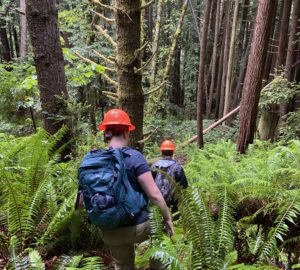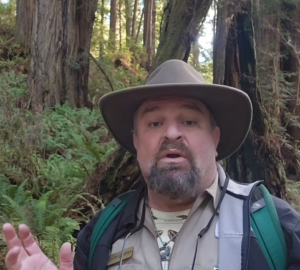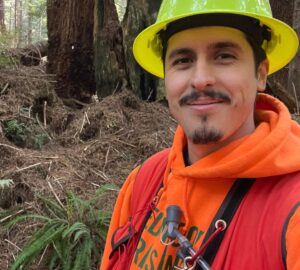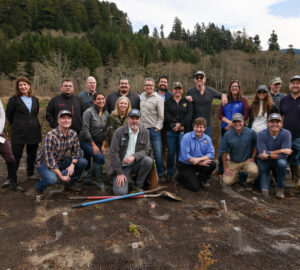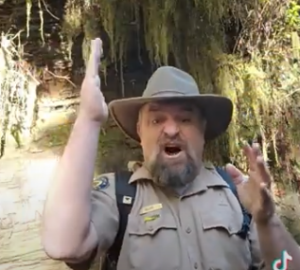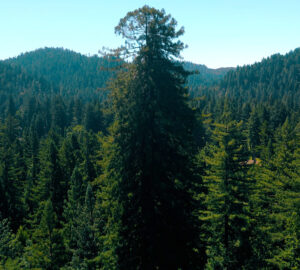New research shows that thinning second-growth redwood forests could help speed their transition into old-growth
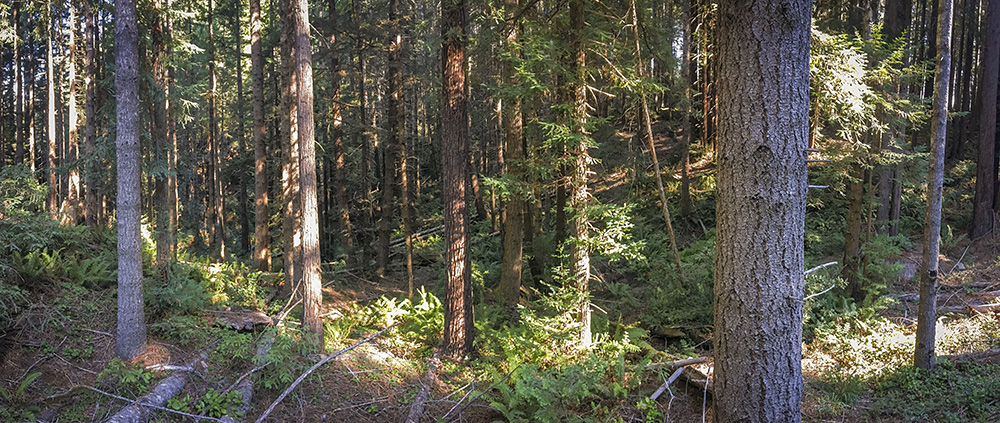
Redwood National and State Parks protect some of the tallest trees in the world as well as thousands of acres of young redwoods that are recovering from a legacy of clear-cut logging before the area was protected as parkland.
In a new study supported by a Save the Redwoods League research grant, researchers from Humboldt State University and the National Park Service sought to find out how restoration efforts affected the young forest’s recovery. They examined young, second-growth stands, comparing those that had been treated using restoration thinning techniques in 1978, 2009, and 2017 to stands that had not been thinned at all. All of the plots were located on Holter Ridge in Redwood National Park.
Researchers found that restoration efforts in redwood forests have the potential to accelerate the development of old-growth characteristics. They note that this is important information for land managers, as conservation groups are looking to expand the application of these treatments throughout formerly logged redwood forests.
Dr. Lucy Kerhoulas, associate professor in forest physiology at Humboldt State University, wanted to address gaps in what we know about these forests.
“A lot of redwood research is focused on the huge, charismatic giants,” she says. “Comparatively little had been done on the second-growth stands.” With the pace of restoration work in second-growth forests set to radically increase, she adds, it’s important to understand how trees, plants, and wildlife respond to these treatments.
Unnaturally dense
What is certain is that redwood forests that were heavily logged need help.
Holter Ridge, for example, once hosted an upland forest with majestic ancient redwood trees and a healthy understory of shrubs and plants. These forests were clear-cut in the 1950s and 1960s and re-planted with a seed mix dominated by Douglas-fir. Fire, which could have thinned out the new young stands, was kept out. The trees grew in dense thickets, shading out the sun.
By the late 1970s, the young forest had stagnated. The average density of the stands at Holter Ridge was 2,400 trees per hectare. In contrast, a typical old-growth redwood forest hosts anywhere from 26 to 90 trees in the same area.
“Because redwoods are so shade tolerant, it could take centuries for these stands to self-thin,” says Lucy Kerhoulas. “These dense stands are a human-created problem, resulting from past land management practices.”
In the 1970s, the National Park Service began acquiring thousands of second- and third-growth forestlands from industrial timber companies. They began experimenting with thinning treatments on Holter Ridge in 1978, following up with numerous restoration thinning projects over the years.
“Just in our backyard, there was this really cool opportunity,” says Lucy Kerhoulas. “We had a chronological sequence where we could look across time at how second-growth stands responded to thinning treatments.”
Researchers typically look at tree growth years after a thinning project to assess how the stand is responding. Kerhoulas decided to also take physiological measurements, which show more immediately how trees are responding to their environment.
“Sometimes treatments can cause water stress shortly thereafter because the trees are sort of shocked,” Kerhoulas explains. “All of a sudden there’s way more light getting to the trees, and they’re not acclimated to that.”
To evaluate stress, she and her colleagues used a metric called water potential, which shows how much water is available to the tree. They took these measurements both at dawn and midday, when water availability was likely to be lowest.
Even trees in stands that had been thinned recently were “pretty hydrated and healthy,” suggesting that the treatments were not stressing the trees out.
They also looked at how much water vapor was leaving the stomata—the pores in leaves and needles where carbon dioxide, oxygen, and water are exchanged. Called “stomatal conductance,” this is a good way to estimate how quickly trees are converting sunlight into sugar. The rates were highest in the plots that had been thinned most recently.
“Opening up the canopy like that increases gas exchange, which is likely to increase growth and vigor of the tree,” explains Lucy Kerhoulas.
They looked at growth directly, too, by taking core samples from live trees. The tree ring patterns showed that annual growth increased after thinning, and not just for a couple of years.
“I wasn’t ready for how dramatic the response was, and that it was so persistent,” says Lucy Kerhoulas. “Even for the treatments that were done decades ago, the trees are still benefitting.”
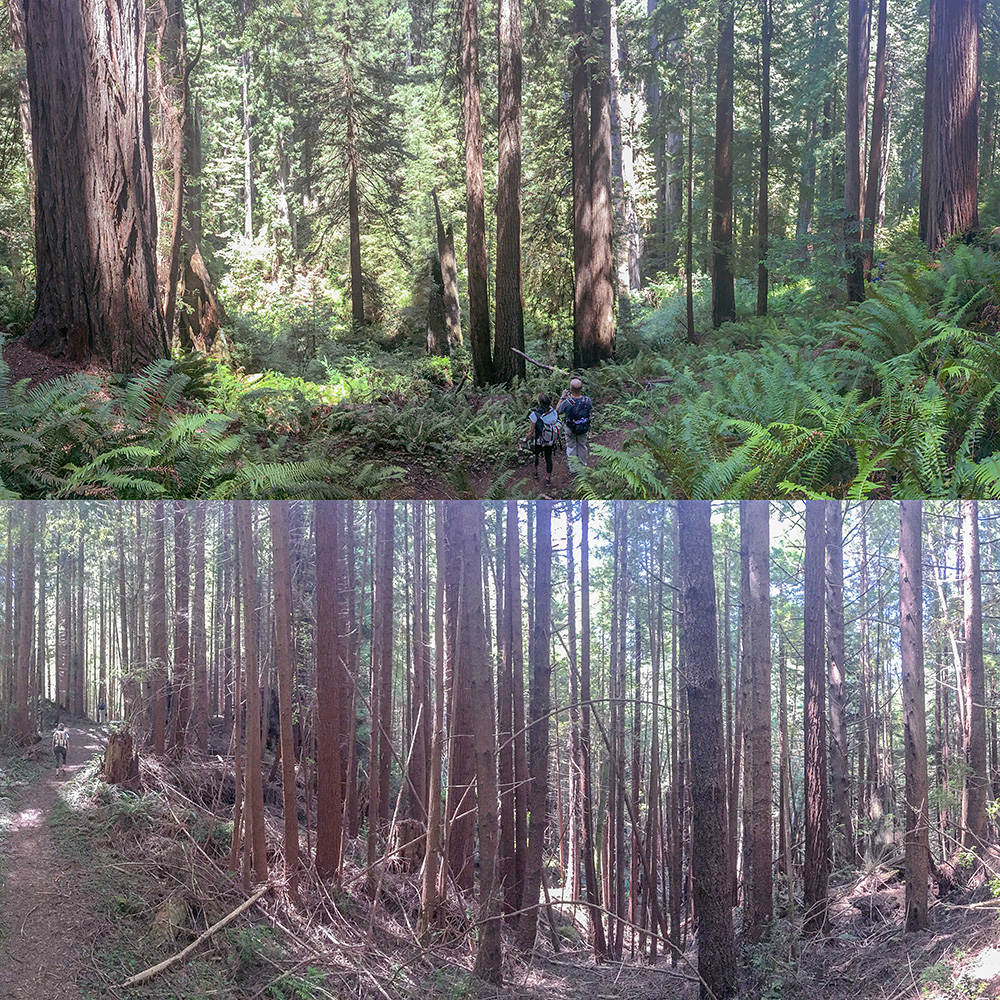
Plants, Birds, and Mammals
The researchers didn’t want to focus solely on trees, but on plant and wildlife diversity, too. Kevin Soland, who sampled understory plants along the chronosequence of treated stands as part of his master’s thesis, says it was visually obvious that the dense, dark stands didn’t support much understory vegetation.
“You couldn’t even walk straight for two or three feet before you had to turn your body and wiggle your way through the stand,” he recalls.
Thinning opens up the canopy, allowing more plants to thrive on the forest floor. Plots that were thinned in 2009 hosted a variety of grasses and flowering plants, while the plots thinned in 1978, where the canopy had become more closed, hosted more shrubs. Not surprisingly, the unthinned control plots were the least diverse of all.
The researchers thought these differences might impact wildlife, and they sampled all of the plots, identifying birds by sight and sound and spying on mammals with cameras. But they didn’t detect a significant difference between the thinned plots and the controls.
“That was interesting, because we thought we might see a change,” says Dr. Nick Kerhoulas, lecturer in the Department of Wildlife at HSU. “But perhaps that’s because even though we’ve thinned these forests, we’re lacking the complex secondary structure that you see in truly old-growth forests.”
Still, he adds, the big takeaway is that they didn’t see any large negative impacts on birds and mammals. Additionally, the team detected a marbled murrelet in one of the plots treated in 1978 and Pacific fisher in plots treated in 1978 and 2009, suggesting that in the long-term restoration thinning may increase suitable wildlife habitat for sensitive species.
As restoration treatments in the redwoods ramp up, that’s welcome news.
Through Redwoods Rising, Save the Redwoods League, California State Parks, and the National Park Service are working to restore more than 70,000 acres of previously logged redwood forest. Restoration thinning will be one of the primary tools used to accelerate the metamorphosis of these stands into old growth.
Although more studies and long-term monitoring will be important, the Holter Ridge study should bolster confidence in the planned restoration approach for second-growth redwood forests.
“It seems like these treatments are effective,” says Lucy Kerhoulas. “They are doing what we want them to do.”


